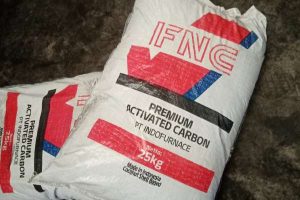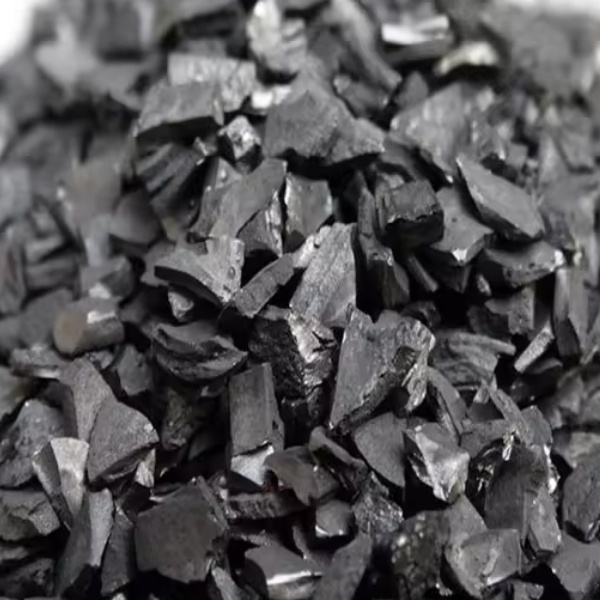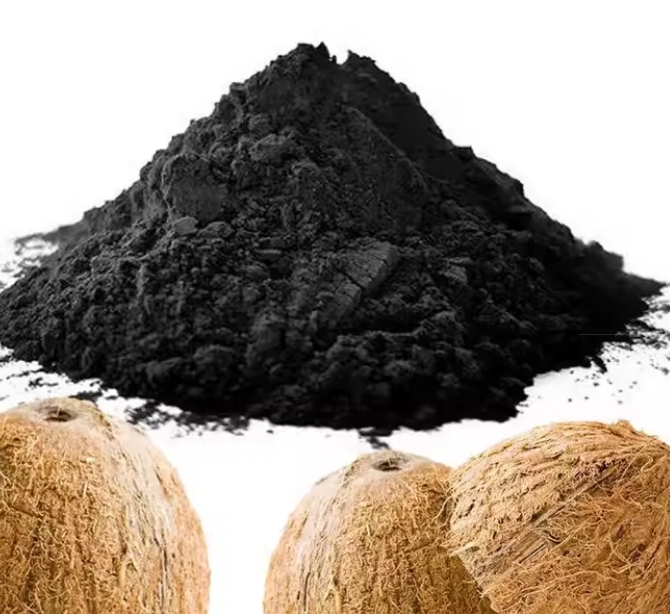Coconut shell charcoal is the raw material for making coconut shell activated carbon,Coconut shell activated carbon is valued for its high porosity and large surface area, making it an excellent material for adsorption applications in water purification, air filtration, and more. Here’s a detailed overview of the process:

1. Activation
Activation increases the surface area and creates the porous structure needed for adsorption. There are two main methods for activation: physical and chemical.
Physical Activation:
Heating: The charcoal is heated at high temperatures (800°C to 1100°C) in the presence of steam or carbon dioxide. This process involves:
Oxidation: Steam or CO2 reacts with carbon in the charcoal to form CO and H2, which helps to develop pores.
Temperature Control: Careful control of temperature and flow rate ensures optimal pore development.
Benefits: Physical activation is environmentally friendly and results in a product with a high degree of microporosity.
Chemical Activation:
Impregnation: Charcoal is treated with a chemical agent, commonly phosphoric acid (H3PO4) or potassium hydroxide (KOH), which acts as a dehydrating agent and helps in pore formation.
Heating: The impregnated charcoal is heated at a lower temperature (450°C to 900°C), which is less energy-intensive than physical activation.
Washing and Drying: After activation, the chemical agent is washed out with water, and the activated carbon is dried.
Benefits: Chemical activation usually results in a higher yield of activated carbon with a well-developed pore structure.
2. Crushing and Sizing
Grinding: The activated carbon is crushed to obtain the desired particle size suitable for various applications.
Sieving: Particles are sieved to separate them into different size fractions.
3. Quality Testing
Surface Area Analysis: Measure the surface area using methods such as BET (Brunauer–Emmett–Teller) to ensure it meets the required specifications.
Adsorption Capacity: Test the adsorption capacity using specific adsorbates to confirm efficiency.
Iodine Number: The iodine number indicates the porosity and adsorption capacity of the activated carbon.
4. Packaging and Storage
Packaging: The activated carbon is packed in air-tight containers to prevent moisture uptake and contamination.
Storage: Store in a dry, cool place away from volatile chemicals.
Key Considerations
Temperature Control: Precise control of temperature during activation is crucial for optimal pore development.
Choice of Activation Method: The choice between physical and chemical activation depends on the desired properties of the activated carbon and environmental considerations.
Safety Measures: Ensure safe handling of chemicals and high temperatures during the process.
Environmental Impact
The production of activated carbon from coconut shells is considered environmentally friendly due to the renewable nature of coconut shells and the low emissions compared to coal-based activated carbon.
Applications
Activated carbon produced from coconut shells is used in a wide range of applications, including water treatment, air purification, gold recovery, and as a catalyst carrier.
By carefully managing each step of the process, manufacturers can produce high-quality activated carbon with excellent adsorption properties suitable for various industrial and commercial uses.



